On the shelves of the stores it is not often possible to meet fresh cucumbers, in connection with this experienced gardeners begin to grow them with their own hands, using heated greenhouses.
However, in this matter it is important to find out the features, study the opinions and reviews of people, determine the terms for effective cultivation and read useful tips.
Content
- 1 Is it possible to grow cucumbers in the winter in a greenhouse
- 2 What should be a winter greenhouse for cucumbers
- 3 Soil work
- 4 Varieties of cucumbers for winter cultivation
- 5 Seed preparation
- 6 Technology for growing cucumber seedlings in a greenhouse in winter
- 7 Agricultural technology for growing cucumbers in a winter greenhouse
- 8 Features of post-transplant care
- 9 Tips from experienced gardeners
- 10 Reviews
- 11 Conclusion
Is it possible to grow cucumbers in the winter in a greenhouse
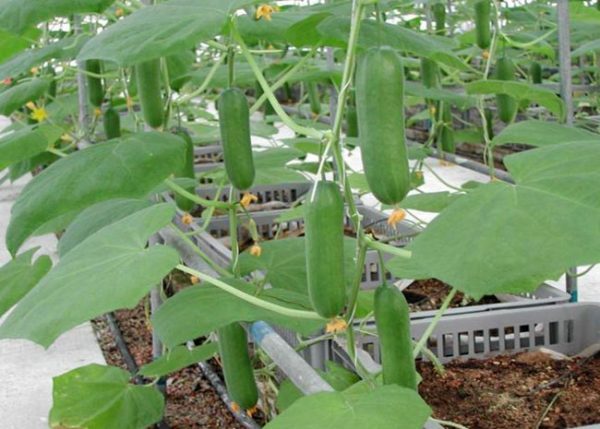
To grow such a vegetable as a cucumber, in the conditions of a greenhouse in the winter, of course, it seems possible. This allows you to eat the freshest vegetables all year round.
It is worth recalling that cucumbers need special care in the greenhouse. They are very demanding on heat and on being regularly watered. In the season under consideration, cucumbers produce fruits depending on their variety. Environmental conditions will not affect what is happening in the greenhouse if the desired temperature regime is observed.
What should be a winter greenhouse for cucumbers
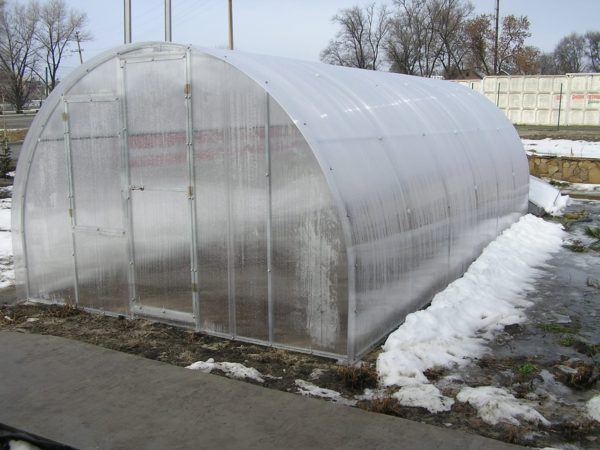
How can you achieve a good result in the design of a greenhouse:
- providing a well-designed and placed greenhouse;
- the presence of high-quality heating;
- moisture level adjustment;
- light from additional sources;
- loosened soil.
Provide such conditions for growing cucumbers in a polycarbonate greenhouse or glass material in winter. Greenhouses from the film are not the most suitable for use in winter, as they have low strength: in conditions of heavy snowfall, the film can sag, and the snow will linger on it and lead to the collapse of the structure.
Greenhouse construction
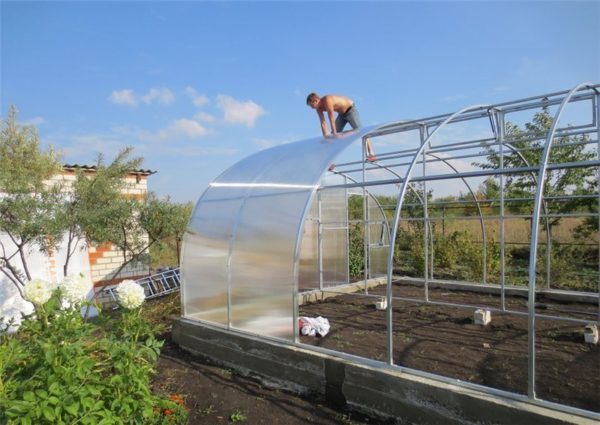
In a ratio of one to two, the temperature behind the greenhouse does not particularly affect the temperature in it. When creating winter greenhouse conditions, gardeners often use polycarbonate and glass. And if a greenhouse is made in the southern part of the country with a low level of temperature fluctuation, then it is possible to use a dense plastic film.
The paramount condition is to protect the culture from exposure to cold and to the maximum possible transmission of sunlight. Greenhouse cover - often glass or polycarbonate; frame construction made of wood or metal. The slope of the wall on the south side in a similar type of greenhouse depends on the slope of the sun above the horizon on the ground. Optimum is the case when at noon the rays penetrate the glass of the greenhouse at a slope of 90 degrees.
The beds in the greenhouse are inclined or stepped. This allows the sun to illuminate the plant without obstacles and warm it well. Paint the back wall of the greenhouse white or foil, as when reflected from it, the sun will illuminate the plants from the back.
It will be convenient to enter the greenhouse through the vestibule. He will save the cucumbers from the cold. There you can put a tank of water and install heating. Ventilation in the winter version of the greenhouse does not need to be done through the window, since drafts are absolutely not needed for cucumbers. The best option is the supply and exhaust version and the use of plastic pipes.
Heating
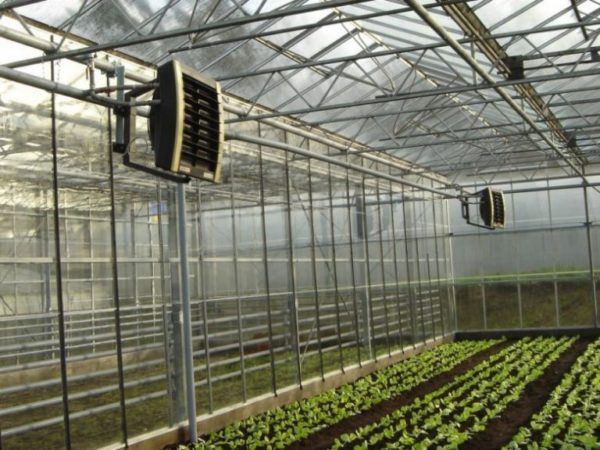
Cucumbers are contraindicated in the too dry atmosphere around, in this regard, it is not worthwhile to put heating appliances in greenhouse constructions, since they dry the air. Here, the best solution would be water-based heating: the earth will be heated with pipes, and the air with radiators.
To heat the coolant, you can use a special boiler or stove. The first option is more suitable because of better results in terms of the degree of combustion and the level of automation. The boiler may be gas, electricity or solid fuel. Power must be taken into account, calculating by the formula: one kilowatt per approximately ten square meters.
Greenhouse lighting
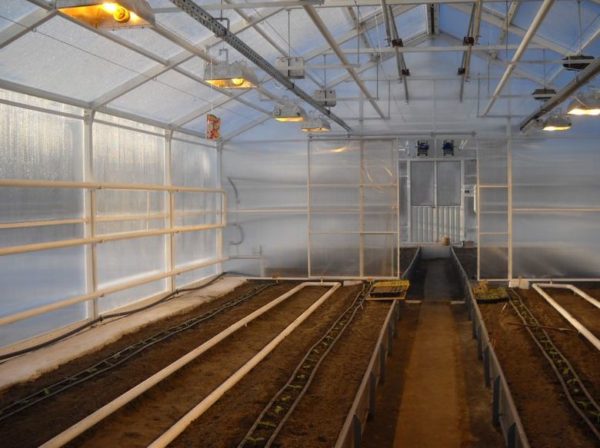
In winter, cucumbers require lighting. It is easy to solve the problem with additional illumination if you use special lamps. However, it is important to observe several parameters, namely the degree of illumination and color temperature.
Plants need daylight or as close as possible to it. Such lighting should have a color temperature equal to five thousand Kelvin. Sources are fluorescent, mercury and metal halide lamps. In the growth stage, the best solution would be to use lamps with a colder shade (about six and a half thousand kelvins), and when flowering and fruiting, with a warmer one (about four thousand kelvins). In such conditions, the plants will remain strong and with good ovaries.
For lighting, special LED plant lights are also suitable. LEDs have a red-blue spectrum that accelerates growth and improves fruiting. The long-term effect of such a spectrum is extremely harmful to human vision, so you need to work in a greenhouse in natural light.
Soil work
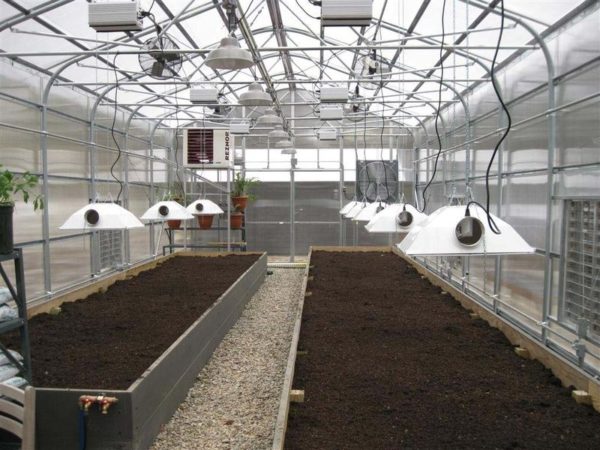
It is necessary to finish the soil preparation in such a time as to sow in the last days of September and get the crops by the beginning of January. The next time you can sow by the end of the first month of winter. If the greenhouse is new, then it is necessary to prepare a mixture rich in organic elements, disinfect the soil, fertilize and dig it to a depth of approximately thirty centimeters.
Substitution and disinfection of soil
If the greenhouse is no longer new, then the gardener should remove the top layer of soil and replace it (about fifteen centimeters). The mixture may consist of humus and forest land (should be mixed in a ratio of one to one). In areas rich in peat, horse peat is taken as a base and garden soil, not treated with herbicides and other chemicals, and humus, in a ratio of 50: 20: 30%, is added to it. The mixture must be carefully shoveled and stuffed her beds.
The next stage of preparation is soil disinfection. The most optimal way is one in which you need to spill the substrate with a solution of copper sulfate (concentration - from five to seven percent).
Application of fertilizers and special substances
The soil must be fed with fertilizers on a mineral basis, for example, kemira, nitrophos. Digging the soil is necessary for thirty centimeters. Soil at the time of sowing should have a temperature of about twenty degrees above zero. About a week before sowing, to enrich the soil with beneficial microflora and eliminate negative elements, you need to add a solution of “Ekomik Urozhayny” or “Baikal EM-1” in the ratio of one hundred millimeters of substance per liter of water. Sow seeds at the end of October or plant seedlings in the last ten days of October.
Varieties of cucumbers for winter cultivation
The best variety is hybrids, since they do not need pollinators, and they also develop well with a small amount of light. The table shows the most popular winter varieties of cucumbers:
| Hybrid | Description |
| Hummingbird F1 | Productivity - nine kilograms per square meter; matures on the fortieth day. A suitable type of climate is moderate. The fruits are crispy, not bitter. The form is a narrowed cylinder. |
| Zozulya F1 | On 1 m2 it is necessary to plant two or three shrubs. Productivity is approximately twenty kilograms per square meter, in the first month - up to sixteen kilograms per square meter. |
| Picnic F1 | Fruits on the forty-eighth day after germination, the type of flowering is female. Suitable soil - open and protected, film cover is allowed. The plant is medium-sized, almost not branched. Ovaries of the main shoot - up to ten pieces. The length of the fetus is up to twelve centimeters, weight is about one hundred grams, there are white spines. Productivity - up to seven kilograms. |
Seed preparation
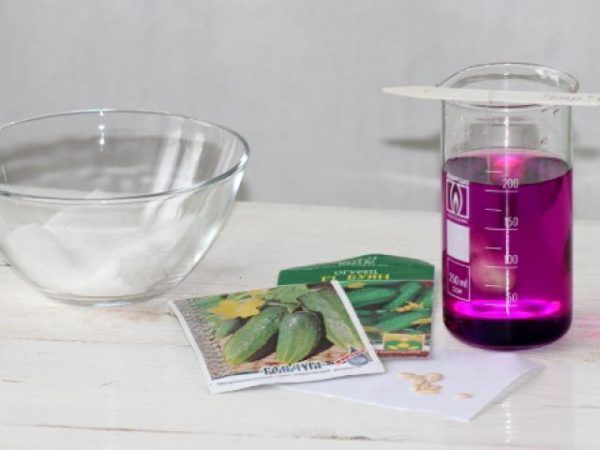
It is necessary to sort the seeds, removing bad and damaged ones. Next, place them in salted water and remove those that have surfaced, wash them from salt. Gardeners select a disinfecting solution with their own hands and purely individually. In order to disinfect the seeds, diluted boric acid or potassium permanganate is well suited. Treated seeds can be kept in the refrigerator for about a week, put on regularly moistened gauze, and used for planting.
Technology for growing cucumber seedlings in a greenhouse in winter
Seed should be sown in pots of peat or specialized "pills". Seedlings need to be planted without destroying the soil lump at the root. If you move the seedlings from different containers during planting, it is necessary to leave the root neck above the soil surface, as this situation will reduce the risk of plant infection. 25-30 day plants with 3-4 leaves should be planted in the ground.
Agricultural technology for growing cucumbers in a winter greenhouse
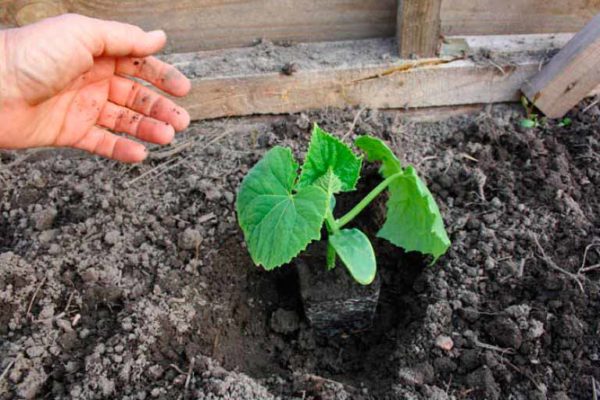
In a greenhouse, it is better to grow cucumbers by the seedling method, because thanks to it, plants grow strong, and the time for harvesting decreases. If the gardener uses seeds from the store, then he does not need to carry out pre-sowing preparation.
Sowing and planting seedlings
The frequency of sowing seeds or seedlings directly depends on the variety of cucumbers and is equal to approximately two or four bushes per square meter, so that there is enough free space for growth and high-quality light distribution. When planted in rows between seedlings, approximately forty-five centimeters are left. At the end of the planting, it is necessary to install wire trellises and tie a twine or a specialized net to them.
Temperature conditions
Throughout the entire period of growth of cucumbers, the soil temperature should be + 15-18 ° C. If the temperature drops, the infection of the roots with the fungus will increase. During the day, the temperature should be in the range from twenty-three to twenty-five degrees Celsius, at night - from eighteen to twenty degrees.
Watering and humidity
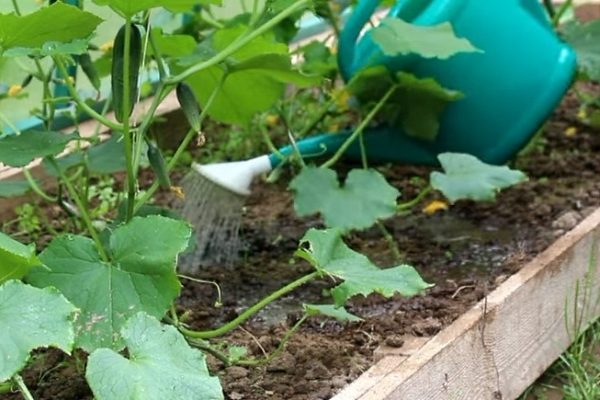
Cucumbers love a humid environment and need systematic watering. Differences in soil moisture are unacceptable. From the time of planting to the time of flowering, it is necessary to water the plant in moderation in order to prevent the formation of a large leaf surface. Watering is necessary after about five days. From the moment of general flowering, watering is worth increasing. It should be carried out up to three times in seven days.
When fruiting, the water rate must be brought up to ten liters per square meter. You need to water the plants with heated, settled water, the temperature of which is close to the temperature of the soil (about twenty degrees above zero Celsius).
If the roots are bare, it is worth hilling the plant or adding a soil mixture.It is better to water the plants in the morning or in the evening, so as not to burn them at high solstice. Upon reaching a temperature of twenty-five degrees Celsius, the greenhouse must be ventilated, but a draft should not be allowed.
Top dressing
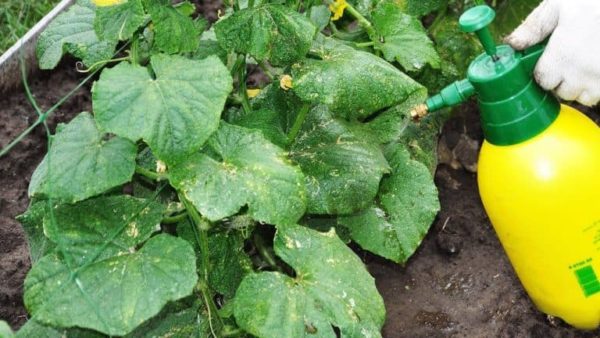
As fertilizer, you can use, for example, chicken droppings (in a ratio of one to fifteen). In order to enrich the infusion with trace elements, you need to add wood ash (one glass per bucket). Stir and let it brew for 2-3 days.
For prevention, three times every fifteen days it is worth spraying the plants with Fitosporin, which prevents the appearance of the fungus.
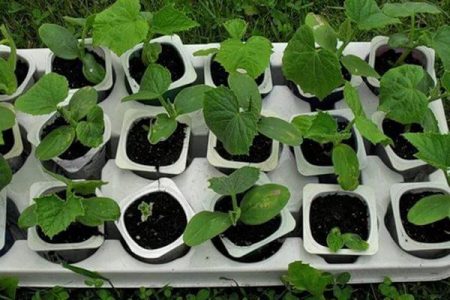 You may be interested in:
You may be interested in:Features of post-transplant care
Cucumbers must be fed once every fourteen days, adding fertilizers in turn on a mineral basis, and then on an organic basis. We must not forget about maintaining high humidity. To ensure such conditions, the floor and heating pipes must be constantly watered. Open tanks should be placed inside the greenhouse, which will be responsible for air humidification, settling and heating of water.
Before flowering, plants need to be watered twice every seven days, and after - more abundantly and more often. Do not forget about the elasticity and juiciness of the leaves. Withered, dry sheets are a signal of extreme lack of moisture. Young plants should be illuminated with low hanging lamps, and then the lamps should be raised as the plants grow. The temperature during the day should be above twenty degrees. The greenhouse must be ventilated carefully, excluding the penetration of cold air directly onto the bushes.
Tips from experienced gardeners
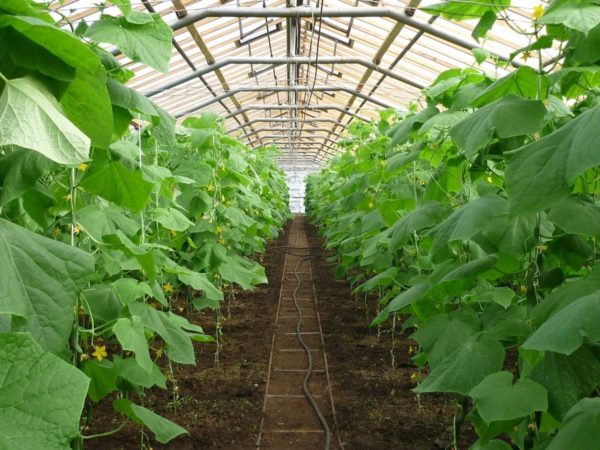
It is necessary to distribute the space as best as possible so that later there would be no inconvenience when working on the care of plants. First you need to carefully dig the earth, loosen it, and then determine the number of beds:
- You can arrange one large bed in the center of the greenhouse, then the plants will be accessible from all sides.
- You can divide the two beds with tracks in the center, on the sides or across, which will greatly simplify maintenance.
- There is also the option of forming two side wide beds with one track in the center, so it will be convenient to care for the plants and the place will be distributed efficiently.
For marking, gardeners usually use wooden bars that support the shape of the beds. The width of the track is from sixty centimeters.
Reviews
Anna Mikhailova, 35 years old
You can always grow cucumbers, given the presence of long-bred special "winter" varieties for the greenhouse. And in no case do not allow a draft! Yes, in winter you have to actively highlight the plant, because natural light will no longer be enough to set fruit. And do not forget about fertilizers for seedlings and already grown cucumbers, I can advise Baikal.
Kirill Matveev, 56 years old
Growing cucumbers in a similar way. I can say that this requires LED lamps with a certain range of lighting conditions. White super-warm - two thousand seven hundred Kelvin, warm - three thousand Kelvin, natural - four thousand Kelvin, cold - more than five thousand Kelvin. This is because a full spectrum of light is needed. Simple LED lamps are not suitable in this case. It is also important to observe the regime both inside the greenhouse and in the ground so that the ground does not freeze.
Conclusion
It is worth saying that to extend the fruiting period of cucumbers in winter, they must be planted step by step, while constantly updating the plantings. By correctly applying theoretical knowledge, modern techniques and equipment, the gardener will be able to harvest a very worthy crop.

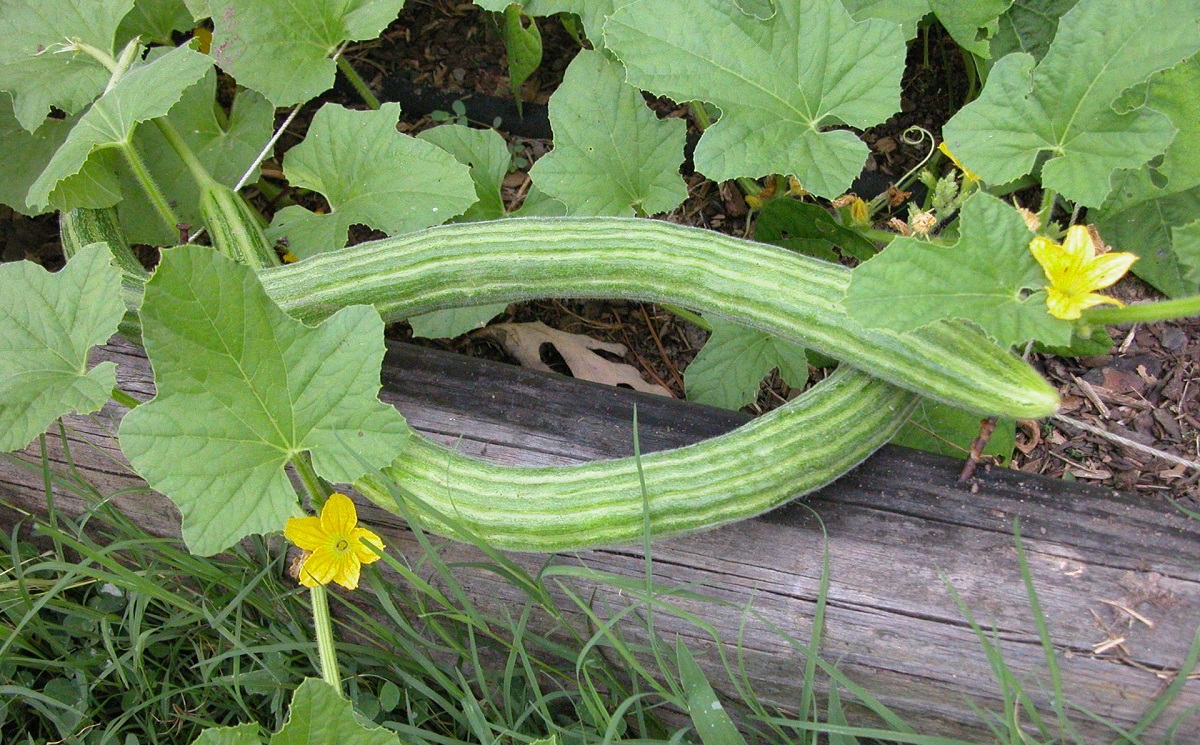 Armenian cucumber with melon flavor: description and characteristics, reviews
Armenian cucumber with melon flavor: description and characteristics, reviews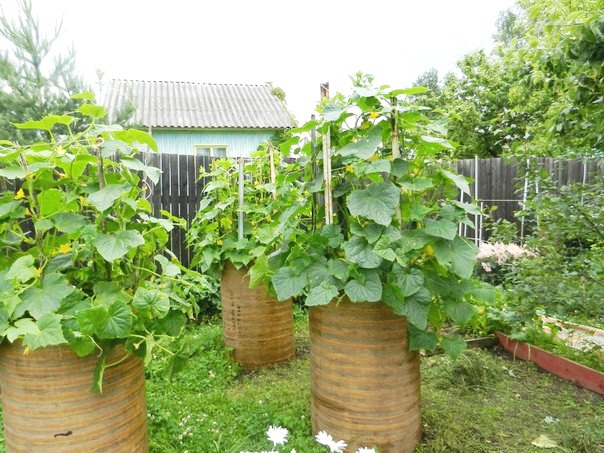 Do-it-yourself vertical beds for cucumbers: schemes, photos
Do-it-yourself vertical beds for cucumbers: schemes, photos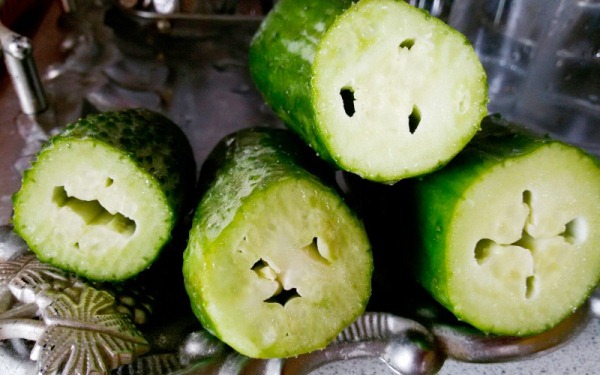 Hollow cucumbers: reasons for the appearance of hollow, what to do
Hollow cucumbers: reasons for the appearance of hollow, what to do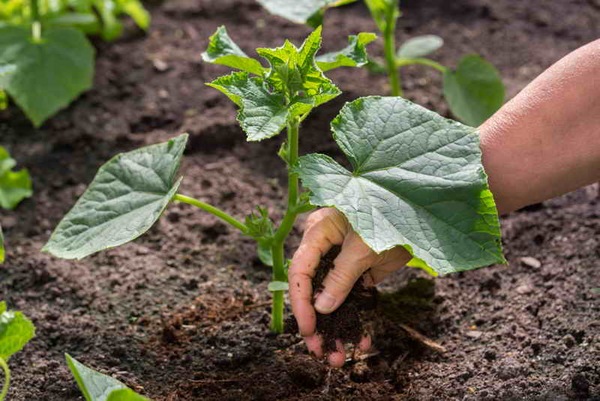 Which manure is best for cucumbers: application, how to breed
Which manure is best for cucumbers: application, how to breed